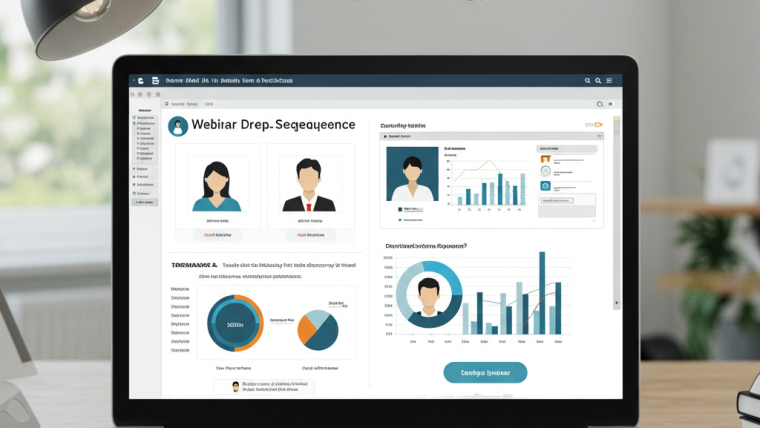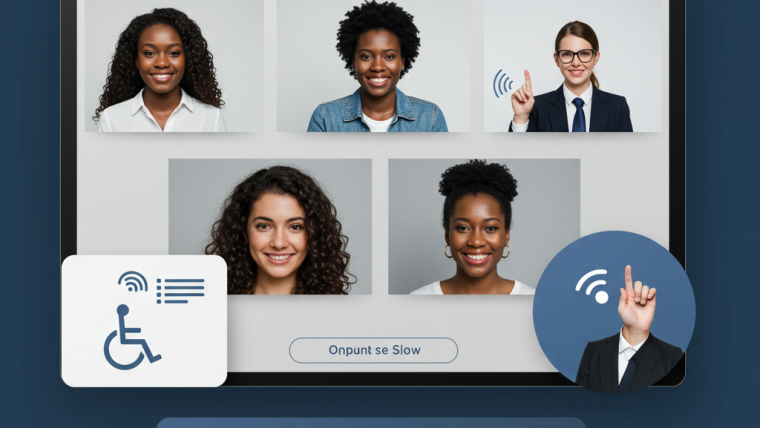Selling during a webinar can feel intimidating, especially if you’re not used to speaking live. But it’s one of the most effective ways to engage your audience and drive real-time sales. With the right planning and delivery, webinars offer a unique chance to connect with people and sell without feeling “salesy.”
In this guide, you’ll learn how to sell products during your webinar by focusing on trust, timing, value, and engagement.
Why Webinars Work So Well for Sell Products
Webinars allow for more than just content delivery. You’re interacting live with real people who showed up because they’re interested. That’s half the battle won.
Unlike cold sales emails or ad clicks, webinars attract a warm audience. These people already trust you enough to spend 30 to 60 minutes listening. If you deliver value during that time, your offer becomes an easy next step.
To ensure a smooth experience while selling, it’s important to avoid common live streaming mistakes that can hurt engagement.”
Prepare With Purpose
Know Your Audience
Before anything else, understand who you’re speaking to. What are their problems? What solutions are they looking for? Tailor your entire webinar around their needs.
Align the Product With the Topic
Your product should feel like the natural answer to the webinar’s main question. Don’t pitch something unrelated. If your topic is about growing an email list, don’t sell a course about Instagram growth.
Set a Clear Goal
You need to know what you want from the webinar. Is it product sales? Demo sign-ups? Course enrollments? One clear call to action makes everything more focused and persuasive.
Deliver Value Before You Sell
Many hosts make the mistake of selling too early. You build trust by first giving real, useful information. Teach something valuable. Show that you understand the problem and offer a preview of the solution.
This builds the “why you” factor. It positions you as someone credible and trustworthy.
Think of your webinar like a movie:
-
Act 1: Introduce the problem and set expectations.
-
Act 2: Deliver insights, break myths, and give real help.
-
Act 3: Transition into your offer naturally.
How to Transition Into the Sale
This is where many people freeze. They don’t know how to go from teaching to pitching. But the transition doesn’t need to be awkward.
Here’s a smooth way to do it:
“What we just covered is exactly what I walk you through step by step in [product name]. If you found this helpful, the full program takes it further.”
From here, walk through your offer like a solution, not a product. Explain how it helps solve the exact problems you just discussed.
Use Stories to Sell, Not Just Features
Stories stick. Instead of listing product features, share real results. Talk about a customer who used your product and how it changed their situation.
A simple case study or short testimonial shared during your pitch adds credibility. When viewers see people like them getting results, they believe it’s possible.
Keep Your Offer Simple and Clear
Don’t overload your audience with too many choices. Make one strong offer. Keep it easy to understand, and include:
-
What it is
-
Who it’s for
-
What problem it solves
-
How it works
-
What’s included
-
Price and any bonuses
Clear beats clever. Focus on clarity over hype.
Create Urgency Without Pressure
You don’t need to be pushy. But you do need urgency. Live webinars are great for time-sensitive offers because people are already paying attention.
Use these subtle urgency triggers:
-
A limited-time bonus
-
A special webinar-only discount
-
Fast-action rewards (for the first 10 buyers)
Be honest. Never fake scarcity. It destroys trust.
Engage During the Pitch
Your pitch should never feel like the end of the webinar. Keep your energy up. Ask questions. Get people to respond in the chat. Answer their questions live.
Use polls, ask for feedback, and invite people to imagine results. The more involved they feel, the easier the decision becomes.
Handle Questions and Objections Live
Q&A is powerful. Don’t skip it.
Encourage honest questions. Address objections naturally. The key is to respond without getting defensive. If someone asks about price, explain the value again.
Make your answers personal. Speak to the person behind the question, not just the crowd.
Keep the Focus on Them, Not You
The most common mistake? Making the pitch all about your product. Instead, make it about your audience.
Use phrases like:
-
“Here’s how this helps you…”
-
“This makes it easier for you to…”
-
“You’ll save time by…”
Make the benefits direct and personal. That’s what moves people to act.
Follow Up After the Webinar
Sales don’t always happen during the live event. Many happen in the hours or days afterward.
Send a follow-up email with:
-
A link to the replay
-
A summary of the offer
-
The deadline reminder
-
Answers to common questions
Make it easy for them to buy later. But don’t spam—send just enough to support their decision.
Test, Improve, Repeat
Not every webinar will be perfect. Record it, review it, and learn from it. You’ll find points where the pitch didn’t land or parts where you lost attention.
Keep improving. Small changes to your structure or language can lead to big jumps in conversion.
Over time, your webinars will become polished, persuasive, and profitable.
Final Thoughts
If you’re wondering how to sell products during your webinar, it comes down to trust, timing, and connection. Start by helping. Teach something useful. Then, offer a solution that feels like the natural next step.
People buy from those they trust—and webinars, when done right, build that trust in real-time.
Selling doesn’t have to feel hard. When you focus on your audience’s needs and show up to serve, sales follow naturally.








Webinar Analytics: A Complete Guide to Measuring Success and Improving Performance
The Ultimate Webinar Follow-Up Strategy to Turn Attendees into Customers
Webinar Accessibility Best Practices: How to Make Your Online Events Inclusive for All
Webinar Personalization: Tailoring Content to Audience Segments for Maximum Engagement